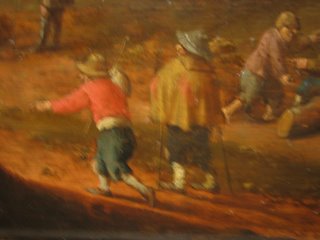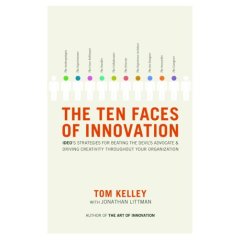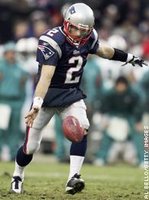Pod Power in The Wall Street Journal
Pod Power--Cutting-edge entrepreneurs see huge marketing potential in one of technology's hottest trends: the podcast
By RAYMUND FLANDEZ Staff Reporter of THE WALL STREET JOURNALJanuary 30, 2006; Page R6
In late 2004, J. Craig Williams discovered a marketing tool that helped bring his small law firm international attention: podcasting.
With a few simple pieces of hardware and software, he could create a brief daily radio show -- a "podcast" -- and anyone with access to the Web could listen. So he bought a microphone, hooked it up to his computer and recorded himself chatting about important cases and other legal news. Then he posted those podcasts online at popular directory sites, as well as his own site, MayItPleaseTheCourt.com.
THE JOURNAL REPORT
See the complete Small Business report.
The results were striking. Listeners -- including some lawyers -- began to call and ask for legal advice. Attorneys around the country began referring clients to him. He even got calls about potential business from overseas.
Indeed, Mr. Williams says his podcasts have given his six-lawyer practice, WLF Williams Law Firm PC of Newport Beach, Calif., the same marketing reach as multinational firms. "The marketing takes care of itself," says the 48-year-old Mr. Williams. "All [the podcast] does is give information. If you like the style of writing and speaking, then you're getting to know me. Then you might call me. It's not a hard sell."
Getting the Word Out
Barely two years old, podcasting is becoming a popular marketing tool among businesses of all sizes. But the technology may have the most to offer entrepreneurs. For an investment of a few hundred dollars, small businesses can get their name before a world-wide audience and potentially boost their revenue.
Precise figures about podcasting audiences are hard to come by. But indirect measures show a large, and growing, market. For instance, almost a third of the 22 million U.S. adults who own iPods or other MP3 players have downloaded and listened to podcasts, according to a Pew Internet and American Life Project survey. (The name podcast comes from the ubiquitous iPod.) Meanwhile, the New Oxford American Dictionary declared "podcast" Word of the Year for 2005, and will add the term to its online version in an update this year.
Podcasts present businesses with unique marketing challenges. Unlike traditional ads, which accompany other pieces of entertainment, a podcast must offer listeners educational or entertainment value in itself -- or else they will simply click it off and download a more interesting program. By some accounts, there are about 20,000 different podcasts online, with topics ranging from music and movie reviews to news and gossip.
On the other hand, podcasts are uniquely user-friendly. You can download the audio file to a computer and play it while you multitask. Or you can stick it on a portable music device and listen during your commute or your workout, just like a radio show or an audio book. Moreover, the audio medium lets charismatic businesspeople show their personality more readily than a conventional advertisement does.
The medium can also give potential customers a chance to sample your wares. When Jeff Kowal started a record label, Lotuspike LLC, two years ago, he sought exposure for its growing list of artists in the progressive ambient music realm. But with bare resources for his Pittsburgh-based company, Mr. Kowal couldn't afford fancy marketing.
So, last year, Mr. Kowal decided to start a podcast featuring chats with the label's artists, announcements of forthcoming concerts and music clips from CDs, as well as original music specifically made for the podcast. It was essentially an "audio newsletter," he says.
Mr. Kowal promoted his offering, dubbed LotusCast, with an email campaign. He also posted the podcast on Apple's iTunes as well as other directories and packed the description with keywords such as "ambient music," "relaxation" and "meditation," to make it easier for interested listeners to find. The result: Traffic soared at Lotuspike.com, and online sales of its CDs and other products doubled, Mr. Kowal says.
Making Yourself Heard
So, if you're an entrepreneur, how do you go about podcasting? All you need is a good microphone, a computer and podcasting software to capture the audio file. You can find a good tutorial on the process at PodcastTools.com, and you can download a free editing and recording tool from audacity.sourceforge.net. At lame.sourceforge.net, you'll find a software tool that converts recordings to MP3 files that can be posted to a Web site.
Starting out, the cost essentially depends on what kind of microphone you choose. A solid, dependable microphone will cost $100 or more. If you upgrade to a professional-quality microphone -- or add other hardware such as an audio mixer and headphones -- the cost could exceed $300. If the choices seem overwhelming, M-Audio, a unit of Avid Technology Inc., bundles starter kits for podcasters. The Podcast Factory, which includes a microphone, a host of software and other features, retails for $179.95.
Beyond that, you may need to pony up for a Web site of your own if your business doesn't already have one, to build your brand, post your podcasts and give your listeners a central location for information about your company. A site will cost about $40 a month in hosting fees.
Before you start recording, think about the structure of your podcast. Ideally, podcasts should be kept short, from five minutes to a half-hour; writing a script beforehand is advisable to prevent awkward pauses and meandering. Also, consider the show's style: Will it consist mostly of interviews, a monologue or a panel discussion?
"Get in early and experiment and find out what works," says Doug Kaye, executive director of Conversations Network of Kentfield, Calif., which publishes presentations from conferences, lectures and meetings online. "And definitely provide a way for listeners to provide feedback."
The big question, of course, is how to attract listeners. First of all, make sure your podcast has good sound quality. At the very least, buy a good microphone -- or, if you want to do more hands-on work, buy a sound mixer that can eliminate crackles and pops.
In terms of content, Mr. Kaye says, your podcast needs to be educational, inspirational and entertaining -- but stop yourself from selling too hard. "Don't be an audio equivalent of a brochure," Mr. Kaye says. "Forget it; nobody wants to hear that." He suggests it may be better to have two people be in a podcast because a conversation sounds more natural than just one person reading copy.
From there, you will probably want to create an RSS, or Really Simple Syndication, feed, which automatically sends listeners new versions of your podcast. You can do this easily at free sites such as Feedburner.com or Odeo.com.
Next, post this feed on podcast directories such as Yahoo's podcasts.yahoo.com, podcast.net or iTunes, at apple.com/podcasting. This step also involves supplying some information about your podcast, such as a description and contact information.
One caveat about directory sites: To get the most out of them, you need to include the right keywords in your description -- or else people won't find you when they search the site. To snare the most listeners, use lots of terms and keep them fairly general.
Meanwhile, like Mr. Williams of MayItPleaseTheCourt.com, use your own site to promote the podcast. Start a blog and mention the podcast frequently; this increases the chance that people searching on Google will find a reference to your offerings. Also begin mentioning and recommending other people's podcasts, which will increase your chances of being cross-promoted. And, of course, make sure your podcast is easily accessible and downloadable from your own site (in fact, give the podcast its own prominent logo to make it stand out).
Eventually, if your podcast becomes popular enough, it will reach the rankings of the most-popular podcasts posted at sites such as PodcastAlley.com. This will increase its visibility dramatically and potentially drive up its listener numbers.
--Mr. Flandez is a Wall Street Journal staff reporter in New York.
Write to Raymund Flandez at raymund.flandez@wsj.com




 This past summer I listened to Thomas Cahill's How the Irish Saved Civilizaition on my IPod. A facinating, entertaining and well-writtn book. One of the most interesting concepts was on how the Irish formed monastic communities. Cahill points out that the Christianity introduced by Patrick was more genuine that that instituted by Constantine since every Celt made the decision to trust Christ volitionally without political pressure or advantage. Cahill quotes and analyzes this prayer by by Manchan of Offaly, a Celtic Monastic; one of St. Patrick's Converts. In this poem Manchan tells how he went off to be a Hermit, but disciples gathered around him, and he found himself the head of a small group of monks! This is how Celtic monasteries often began in the time period of 500-1200 A.D. The poem describes what these early type of monastic communities were like. They were small in number, twelve monks being considered the right size.
This past summer I listened to Thomas Cahill's How the Irish Saved Civilizaition on my IPod. A facinating, entertaining and well-writtn book. One of the most interesting concepts was on how the Irish formed monastic communities. Cahill points out that the Christianity introduced by Patrick was more genuine that that instituted by Constantine since every Celt made the decision to trust Christ volitionally without political pressure or advantage. Cahill quotes and analyzes this prayer by by Manchan of Offaly, a Celtic Monastic; one of St. Patrick's Converts. In this poem Manchan tells how he went off to be a Hermit, but disciples gathered around him, and he found himself the head of a small group of monks! This is how Celtic monasteries often began in the time period of 500-1200 A.D. The poem describes what these early type of monastic communities were like. They were small in number, twelve monks being considered the right size.





 This is from a friend of mine, Jerry Edmonson, who is pastor of the Fellowship of Cinco Ranch in Katy, Texas (
This is from a friend of mine, Jerry Edmonson, who is pastor of the Fellowship of Cinco Ranch in Katy, Texas (

 This last week I saw more of what God is doing through externally focused churches in Wisconsin, Michigan and Texas. I started Wednesday afternoon with Rich Henderson with Blackhawk Church in Madison. Rich was 25 years with Intervarsity, working both locally and nationally so that was a good connection. I'd never been to Madison before and it is a very cool town--situated around a number of lakes with the student union of the University of Wisconsin planted right on the edge of Lake Mendota. Pretty impressive. Rich and I met at a pizza place called Ian's Pizza on State Street. On the recommendation of the proprietor I had a piece of macaroni and cheese pizza--their best seller. It was really good! We met that evening at Rich's home with a handful of passionate leaders that most likely will be part of the next Leadership Community that is forming.
This last week I saw more of what God is doing through externally focused churches in Wisconsin, Michigan and Texas. I started Wednesday afternoon with Rich Henderson with Blackhawk Church in Madison. Rich was 25 years with Intervarsity, working both locally and nationally so that was a good connection. I'd never been to Madison before and it is a very cool town--situated around a number of lakes with the student union of the University of Wisconsin planted right on the edge of Lake Mendota. Pretty impressive. Rich and I met at a pizza place called Ian's Pizza on State Street. On the recommendation of the proprietor I had a piece of macaroni and cheese pizza--their best seller. It was really good! We met that evening at Rich's home with a handful of passionate leaders that most likely will be part of the next Leadership Community that is forming.


 I'm simply posting Doug Flutie's picture of his dropkicked PAT simply for the historocity of the moment. It is the first dropkick since 1941. Every rugby fan / player has the dropkick in the arsenal. I'm surprised teams don't do more of them. Dropkicking from any point on the field would yield three points.
I'm simply posting Doug Flutie's picture of his dropkicked PAT simply for the historocity of the moment. It is the first dropkick since 1941. Every rugby fan / player has the dropkick in the arsenal. I'm surprised teams don't do more of them. Dropkicking from any point on the field would yield three points.












